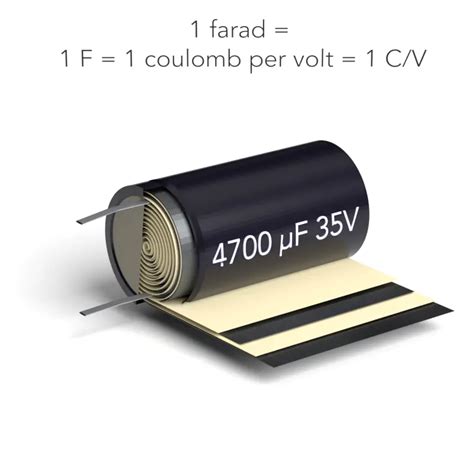Delving into the Capacitive World: A Comprehensive Guide to Capacitors in Series
Introduction
Capacitors, ubiquitous in the realm of electronics, serve as pivotal components in a wide array of applications. Their ability to store electrical energy and release it when needed makes them indispensable in circuits ranging from simple filters to complex electronic systems. When capacitors are connected in series, they exhibit unique characteristics that can be harnessed to achieve specific electrical properties. This article aims to provide a comprehensive exploration of capacitors in series, their applications, and the essential considerations for their effective utilization.
Understanding Capacitance
Before delving into the intricacies of capacitors in series, it is important to have a foundational understanding of capacitance. Capacitance is a measure of a capacitor's ability to store electrical energy. It is defined as the ratio of the electric charge stored on the capacitor to the potential difference across its terminals. The unit of capacitance is the farad (F), named after the renowned physicist Michael Faraday.
Capacitors in Series
When capacitors are connected in series, they form a single equivalent capacitor. The equivalent capacitance of capacitors in series is less than the capacitance of the smallest capacitor in the series. This is because the total capacitance is inversely proportional to the sum of the individual capacitances. Mathematically, it can be expressed as:
1/C_eq = 1/C_1 + 1/C_2 + ... + 1/C_n
where:

- C_eq is the equivalent capacitance
- C_1, C_2, ..., C_n are the capacitances of the individual capacitors in series
Applications of Capacitors in Series
Capacitors in series find applications in various electrical systems. Some notable examples include:
-
Voltage dividers: Capacitors in series can be used to divide the input voltage across multiple output terminals. This is useful in applications where different voltage levels are required.
-
Filters: Capacitors in series can be combined with resistors to form filters that remove unwanted frequency components from a signal.
-
Energy storage: Series-connected capacitors can be used to store electrical energy and release it when needed. This is commonly employed in power electronics applications.
Benefits of Capacitors in Series
Connecting capacitors in series offers several benefits, including:

-
Reduced overall capacitance: By connecting capacitors in series, the equivalent capacitance is reduced, which can be desirable in certain applications.
-
Increased voltage rating: The voltage rating of series-connected capacitors is additive. This means that the equivalent voltage rating is equal to the sum of the individual voltage ratings.
-
Improved reliability: Capacitors in series provide redundancy, as the failure of one capacitor does not necessarily result in the failure of the entire system.
Considerations for Capacitors in Series
When using capacitors in series, careful consideration should be given to the following factors:
-
Capacitance values: The capacitance values of the individual capacitors should be chosen carefully to achieve the desired equivalent capacitance.
-
Voltage ratings: The voltage ratings of the capacitors should be equal to or greater than the expected voltage across the series combination.
-
Dielectric materials: The dielectric materials used in the capacitors should be suitable for the intended application and environmental conditions.
-
Parasitic effects: Parasitic effects such as leakage current and inductance can affect the performance of series-connected capacitors.
Effective Strategies
To effectively utilize capacitors in series, the following strategies can be employed:

-
Use high-quality capacitors: Choosing capacitors with low leakage current and low inductance is essential for optimal performance.
-
Match capacitance values: The capacitance values of the individual capacitors in the series should be matched to achieve the desired equivalent capacitance.
-
Consider dielectric properties: The dielectric materials used in the capacitors should be appropriate for the intended application and environmental conditions.
-
Test and validate the design: Thorough testing and validation of the series capacitor design is crucial to ensure its reliability and performance.
Common Mistakes to Avoid
When working with capacitors in series, it is important to avoid the following common mistakes:
-
Exceeding voltage ratings: Do not connect capacitors in series that exceed the voltage rating of the individual capacitors.
-
Using incompatible dielectrics: Ensure that the dielectric materials used in the capacitors are compatible with the intended application.
-
Ignoring parasitic effects: Neglecting parasitic effects such as leakage current and inductance can lead to unexpected performance issues.
-
Overlooking maintenance: Regular maintenance and testing of series-connected capacitors is essential for maintaining their reliability and performance.
FAQs
1. What is the equivalent capacitance of two capacitors in series?
The equivalent capacitance of two capacitors in series is given by:
1/C_eq = 1/C_1 + 1/C_2
2. How do capacitors in series affect the voltage distribution?
The voltage distribution across capacitors in series is proportional to their capacitance values. The capacitor with the highest capacitance will have the lowest voltage across it.
3. What are the advantages of using capacitors in series?
Advantages of using capacitors in series include reduced overall capacitance, increased voltage rating, and improved reliability.
4. What are the considerations when connecting capacitors in series?
When connecting capacitors in series, consider the capacitance values, voltage ratings, dielectric materials, and parasitic effects.
5. How can I improve the performance of capacitors in series?
To improve the performance of capacitors in series, use high-quality capacitors, match capacitance values, consider dielectric properties, and test and validate the design.
6. What are the common mistakes to avoid when using capacitors in series?
Common mistakes to avoid include exceeding voltage ratings, using incompatible dielectrics, ignoring parasitic effects, and overlooking maintenance.

Call to Action
Understanding the principles of capacitors in series is crucial for effectively utilizing them in electrical circuits. By carefully considering the capacitance values, voltage ratings, dielectric materials, and parasitic effects, you can harness the unique characteristics of series-connected capacitors to achieve desired electrical properties and optimize system performance. Remember to implement effective strategies, avoid common mistakes, and conduct thorough testing and validation to ensure the reliability and longevity of your capacitor designs.
